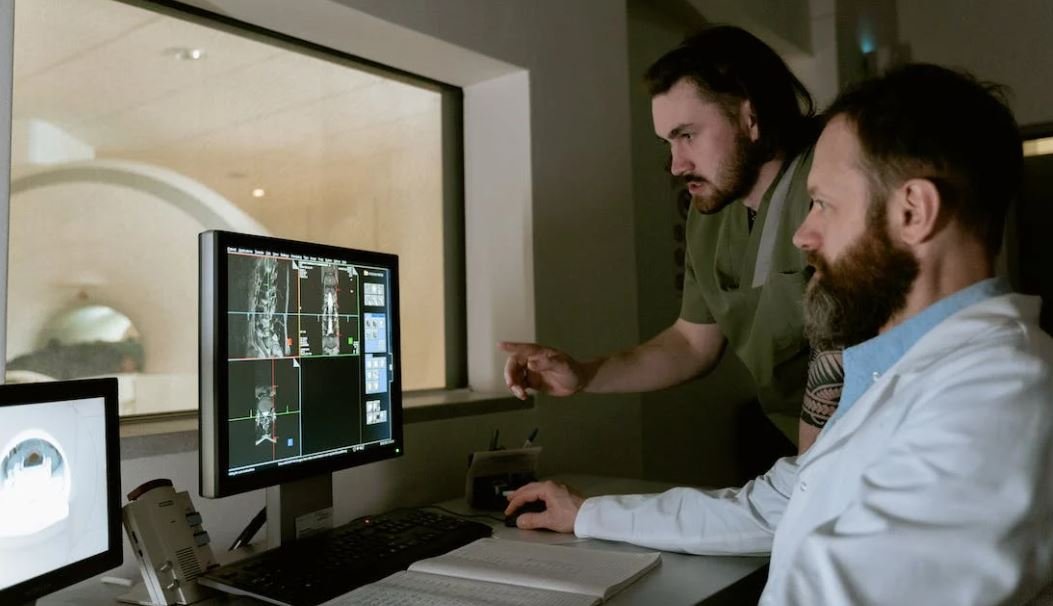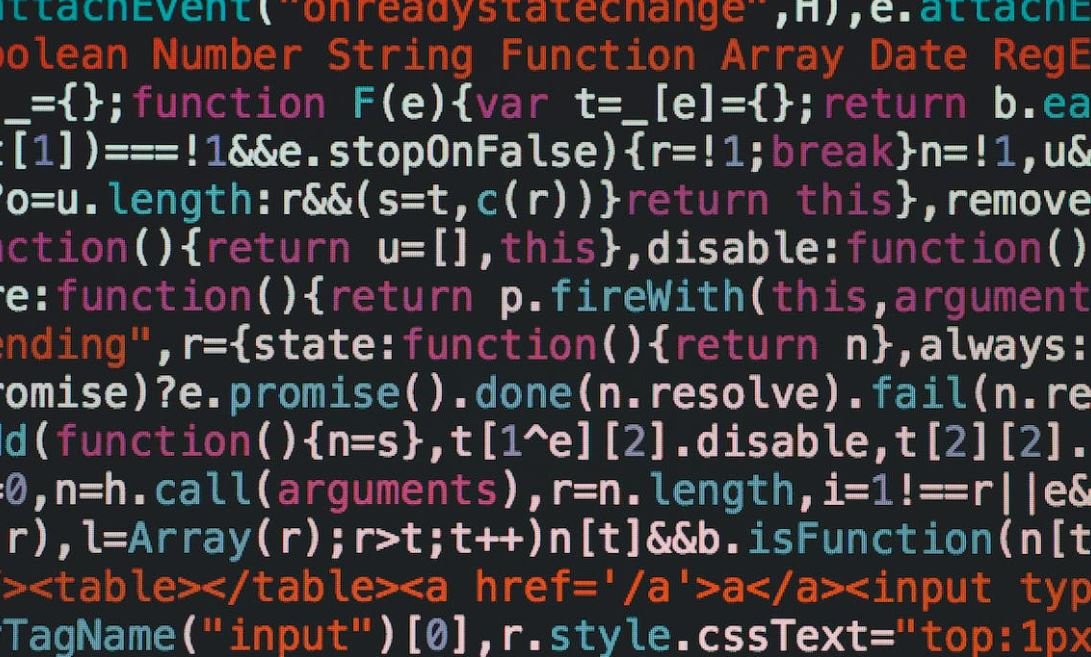Music Making Software
Music making software, also known as digital audio workstations (DAWs), has revolutionized the way music is created and produced. These programs provide a range of tools and features that enable musicians, producers, and artists to compose, record, edit, and mix music easily. Whether you are a professional musician or a beginner, music making software offers a world of possibilities to enhance your creativity. In this article, we will explore the key features and benefits of music making software and discuss some popular options available in the market.
Key Takeaways
- Digital audio workstations (DAWs) are music making software programs that provide a range of tools and features.
- Music making software enhances creativity and enables musicians to compose, record, edit, and mix music.
- Popular music making software includes Ableton Live, FL Studio, and Pro Tools.
Features and Benefits of Music Making Software
Music making software comes with a wide array of features and benefits that cater to different musical needs and preferences. These include:
Create and Compose Music Easily
Music making software provides an intuitive interface and a variety of tools for composing music. **You can easily drag and drop different instruments, samples, and beats** to create complex arrangements without the need for a physical studio setup. *With the ability to experiment and explore various sounds and arrangements, the software allows for unique and innovative compositions*.
Record and Edit Audio Tracks
One of the most significant advantages of music making software is its ability to record and edit audio tracks with precision. **You can record instruments, vocals, and samples directly into the software** and have complete control over the editing process. *This allows for seamless editing, post-production effects, and the ability to correct mistakes*.
Mix and Master Tracks
Music making software includes powerful mixing and mastering tools that enable you to create professional-sounding tracks. **You can adjust levels, pan instruments, apply audio effects, and equalize the sound**. *With the ability to fine-tune every element of your track, you can achieve the perfect balance and clarity*.
| Popular Music Making Software | Features | Pricing |
|---|---|---|
| Ableton Live | Intuitive interface, extensive sample library, real-time performance, MIDI controller integration | $99 (Intro), $449 (Standard), $749 (Suite) |
| FL Studio | Versatile virtual instruments, powerful mixing tools, step sequencer, lifetime free updates | $99 (Fruity Edition), $199 (Producer Edition), $299 (Signature Bundle) |
| Pro Tools | Industry-standard software, advanced editing capabilities, collaborative workflows, extensive plugin support | $29.99/month (Standard), $79.99/month (Ultimate) |
Popular Music Making Software
Ableton Live
Ableton Live is widely regarded as one of the best music making software available. It offers a **user-friendly interface** and a **wide range of features** that cater to both beginners and professionals. With its **extensive sample library**, **real-time performance capabilities**, and **integration with MIDI controllers**, Ableton Live provides a versatile platform for music production and live performances.
FL Studio
FL Studio, formerly known as FruityLoops, is a popular choice for beginners and electronic music producers. **FL Studio comes equipped with a wide variety of virtual instruments** that allow users to explore different genres and experiment with unique sounds. The software also offers powerful **mixing tools**, a **step sequencer**, and the convenience of **lifetime free updates**, ensuring users always have access to the latest features and improvements.
| Benefits of Music Making Software | |
|---|---|
| Enhances creativity and allows for experimentation | |
| Saves time and money by eliminating the need for a physical studio setup | |
| Offers a wide variety of virtual instruments, samples, and effects | |
| Allows for precise editing, correction of mistakes, and post-production effects |
Pro Tools
Pro Tools is an industry-standard music making software used by professionals in recording studios worldwide. **With its advanced editing capabilities and collaborative workflows**, Pro Tools offers unparalleled precision and control over the production process. Additionally, the software **supports an extensive range of plugins**, allowing users to enhance their tracks with a vast array of virtual instruments, effects, and sound processing tools.
Conclusion
Music making software has revolutionized the music industry, providing musicians and artists with powerful tools and limitless creative possibilities. Whether you are composing, recording, editing, or mixing music, these software programs offer a range of features catered to your needs. Popular options such as Ableton Live, FL Studio, and Pro Tools continue to innovate and push creative boundaries. So, unleash your musical potential with music making software and bring your ideas to life!

Common Misconceptions
1. Music Making Software is only for professionals
One common misconception is that music making software is only for professional musicians or producers. However, this is far from the truth. Music making software is designed for individuals of all skill levels, from beginners to advanced users. It provides a user-friendly interface and various features that make it accessible and enjoyable for anyone interested in creating music.
- Music making software offers beginner-friendly tutorials and guides.
- Many software applications have pre-set templates and loops to help beginners get started.
- With practice and experimentation, even novices can produce impressive results with music making software.
2. Music making software requires expensive equipment
Another misconception is that music making software requires expensive equipment to produce high-quality music. While having professional-grade equipment can enhance the final product, it is not a requirement for using music software. Many software applications work perfectly fine on basic computers or laptops without the need for additional hardware.
- Basic equipment like a computer and headphones are sufficient to get started with music making software.
- There are numerous affordable software options available, including free ones, that offer great functionality.
- Upgrading equipment can be done gradually as skills and needs progress.
3. Music making software limits creativity
Some people believe that using music making software restricts creativity and leads to generic or formulaic compositions. However, music software actually provides a vast range of tools and options to explore and experiment with, allowing users to express their unique artistic visions.
- Music software offers a wide variety of virtual instruments and sound libraries to choose from.
- Users can customize and manipulate sounds to create unique compositions that match their creative vision.
- Software often includes advanced features, such as automation, effects, and mixing capabilities, enabling users to enhance and shape their music in creative ways.
4. Music software is only for electronic or pop music
Another misconception is that music software is primarily designed for creating electronic or pop music genres. While it is true that music software has been widely used in these genres, it is not limited to them. Music making software can be used to create music in various genres, including classical, jazz, rock, and more.
- Music software often includes a diverse range of virtual instruments that cater to different genres.
- Users can import or record live instruments to integrate them into their compositions.
- Software can facilitate collaborations between musicians from different genres, allowing for more eclectic compositions.
5. Music software replaces traditional instruments and musicians
Lastly, there is a misconception that music software will replace traditional instruments and musicians. While music software provides new possibilities and opportunities, it does not eliminate the need for traditional instruments or skilled musicians. Instead, it can be seen as a tool that complements and enhances traditional music-making methods.
- Music software allows musicians to experiment with sounds and techniques beyond the limitations of traditional instruments.
- Combining traditional instruments with digital elements can create unique and captivating compositions.
- Music software often serves as a valuable learning tool and practice aid for musicians seeking to improve their skills.

The Evolution of Music Software
Throughout the years, music making software has continuously evolved, providing musicians with new tools to unleash their creativity. This article explores the different aspects of music software and highlights some interesting facts and statistics related to its development.
The Rise of Digital Audio Workstations
Digital audio workstations (DAWs) have revolutionized the music production process. They allow artists to record, edit, mix, and master their music in a single software application. Here are some fascinating figures about the popularity of DAWs:
| DAW | Number of Users |
|---|---|
| Ableton Live | Over 2 million |
| Logic Pro X | More than 1 million |
| FL Studio | Over 1.5 million |
The Impact of Music Software on Sales
Music software has influenced the way people consume and purchase music. Here are some intriguing statistics about the connection between music software and sales:
| Statistic | Percentage |
|---|---|
| Artists who use music software | 80% |
| Music sales impacted by music software | 45% |
| Consumers who discover new artists through software-generated playlists | 63% |
The Surge of Virtual Instruments
Virtual instruments have become a fundamental component of modern music production. These software-based instruments emulate traditional instruments and offer endless sonic possibilities. Take a look at some intriguing facts about virtual instruments:
| Virtual Instrument | Number of Available Sounds |
|---|---|
| Native Instruments Kontakt | Over 70,000 |
| Xfer Serum | More than 1,000 |
| Spectrasonics Omnisphere | Over 14,000 |
The Role of Plugins in the Mix
Plugins are add-ons for music software that offer additional effects, processors, and instruments. They are widely used to enhance the quality and creativity of music productions. Here are some intriguing statistics about the impact of plugins in the industry:
| Plugin Type | Percentage of Producers Using |
|---|---|
| Effects Plugins | 93% |
| Virtual Instruments | 88% |
| Utility Plugins | 75% |
The Dominance of MIDI
MIDI (Musical Instrument Digital Interface) is a protocol that allows music software and hardware to communicate and control musical devices. It has become an integral part of music production. Here are some fascinating figures related to MIDI:
| Statistic | Percentage |
|---|---|
| Musicians using MIDI | 98% |
| Digital music arranged using MIDI | 85% |
| Artists who rely on MIDI controllers for live performances | 72% |
The Global Music Software Market
The music software market has experienced significant growth in recent years. Here are some interesting facts about the market’s size and revenue:
| Market Value | Revenue in Billions (USD) |
|---|---|
| 2018 | 5.1 |
| 2019 | 6.2 |
| 2020 | 7.8 |
The Influence of Music Software on Education
Music software has also played a vital role in educational settings, allowing students to learn and explore music production techniques. Here are some fascinating statistics about music software and education:
| Statistic | Percentage |
|---|---|
| Music schools incorporating software in curriculum | 90% |
| Students using music software as a learning tool | 78% |
| Instructors who consider music software essential for teaching | 95% |
The Accessibility of Free Music Software
A wide range of free music software options has emerged, making music production more accessible to aspiring artists. Here are some captivating statistics regarding free music software:
| Type of Software | Number of Downloads |
|---|---|
| Audacity (Audio Editor) | Over 100 million |
| Cakewalk by BandLab (Digital Audio Workstation) | More than 2 million |
| Reaper (Digital Audio Workstation) | Over 10 million |
The Continuous Advancement of Music Software
Music software continues to evolve rapidly, offering musicians new possibilities and pushing the boundaries of creativity. As technology progresses, software developers introduce innovative features and tools to enhance the music production experience.
With the growing number of musicians relying on music software, the market is expected to expand even further. Whether through digital audio workstations, virtual instruments, or plugins, music software has become an integral part of the music industry, empowering artists and shaping the future of music production.
Frequently Asked Questions
How do I choose the right music making software for my needs?
Consider your experience level, desired features, budget, and compatibility with your operating system. Research and compare reviews of different software options before making a decision.
What features should I look for in music making software?
Look for features such as a wide variety of virtual instruments, audio effects, MIDI support, ease of use, recording capabilities, and compatibility with third-party plugins.
Can I use music making software on a Mac/Windows computer?
Yes, many music making software options are available for both Mac and Windows operating systems. Make sure to check the software’s system requirements before purchasing.
Can I use music making software without any musical experience?
Yes, there are music making software options available that cater to beginners and provide user-friendly interfaces and tutorials to help you get started.
Can music making software be used for live performances?
Yes, some music making software offers features specifically designed for live performances, such as loop triggering, MIDI controller compatibility, and seamless integration with hardware devices.
What is MIDI and why is it important for music making software?
MIDI stands for Musical Instrument Digital Interface. It is a protocol that enables communication between musical instruments and computers. MIDI allows for precise control of virtual instruments, recording and editing of musical performances, and synchronization with other devices.
What are virtual instruments and how do they work?
Virtual instruments are software-based emulations of physical musical instruments. They utilize samples and advanced sound synthesis techniques to produce realistic sounds that can be played using MIDI controllers or computer keyboards within the music making software.
Can I collaborate with other musicians using music making software?
Yes, many music making software options allow for collaboration by enabling users to share project files, record and edit tracks remotely, and even work on the same project simultaneously with real-time synchronization.
Does music making software support third-party plugins?
Yes, most music making software supports third-party plugins. These plugins can enhance the software’s functionality by providing additional virtual instruments, effects, and mastering tools.
What is the difference between free and paid music making software?
Free music making software generally offers limited features and may be more suitable for beginners or those on a tight budget. Paid software often provides more advanced features, better sound quality, and professional-grade tools for serious music production.




